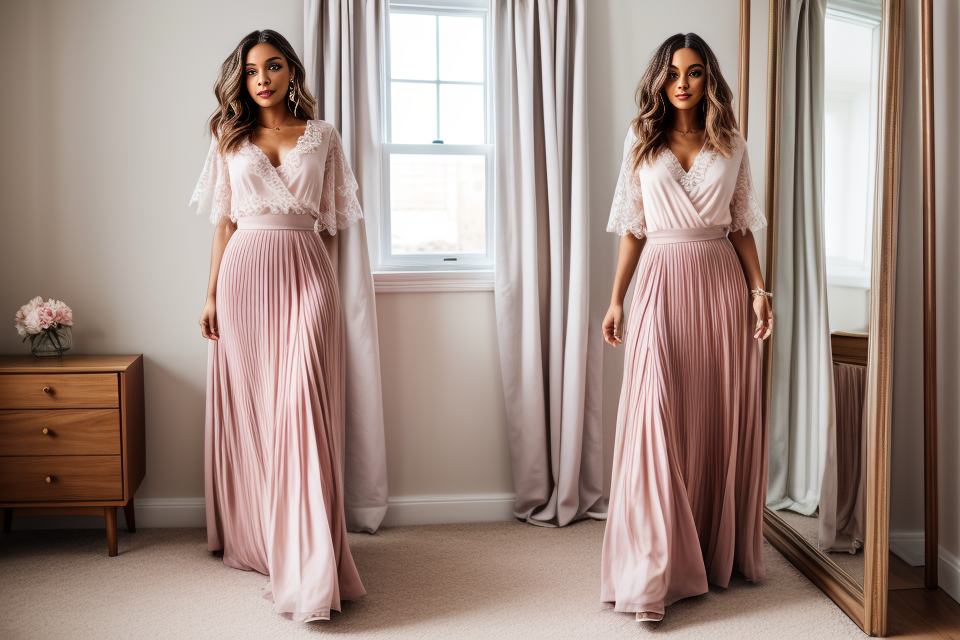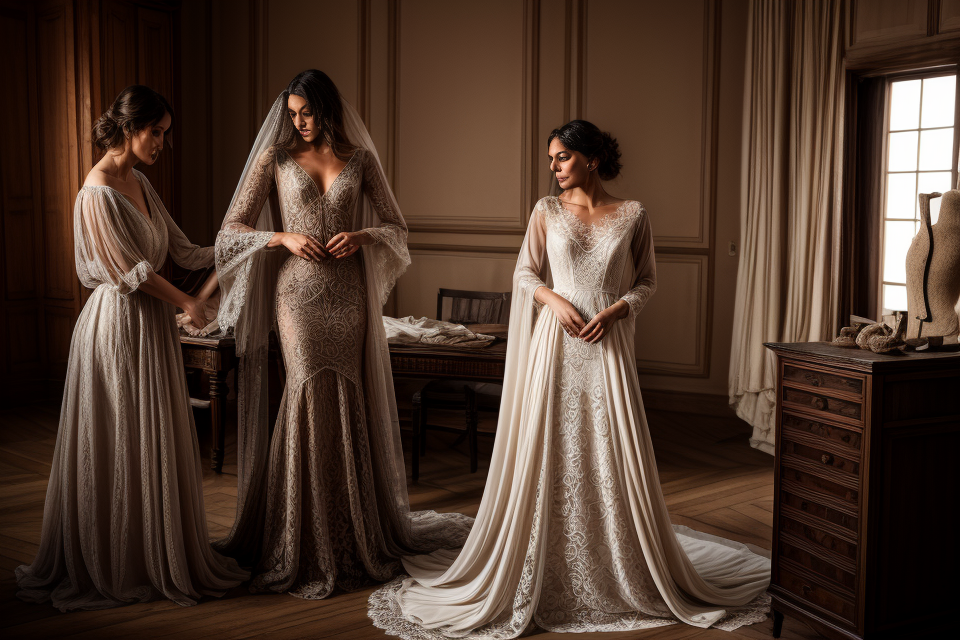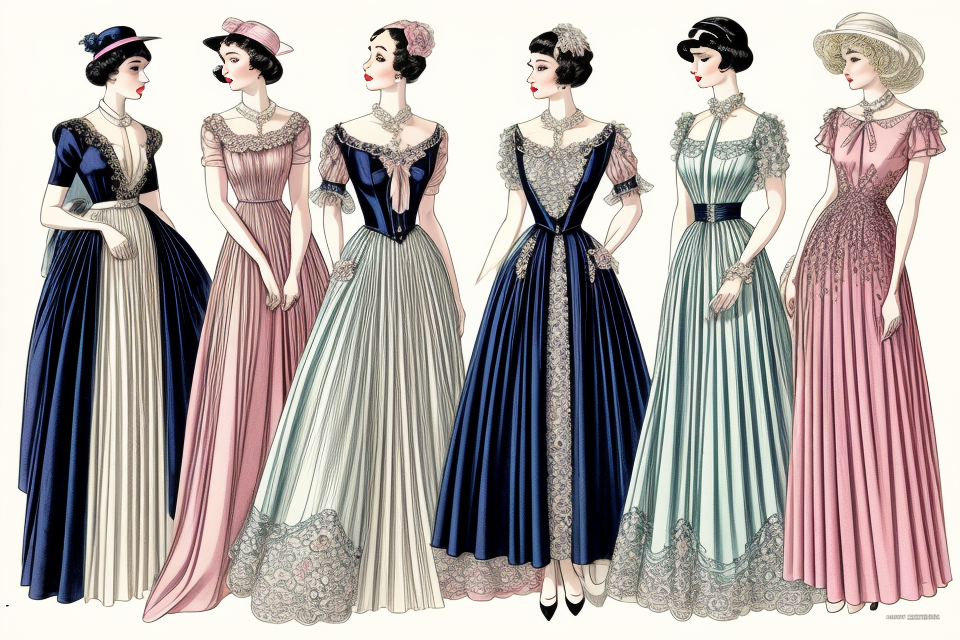
Dressing up is not just about putting on clothes, it’s an art! Mastering the art of dressing requires understanding the nuances of using the word ‘dress’ as both a verb and noun. In this article, we will explore how to use ‘dress’ as a verb and noun in a sentence, and learn the tricks to dressing up like a pro. Whether you’re getting ready for a special occasion or just running errands, knowing how to dress is essential. So, let’s dive in and learn how to dress to impress!
Understanding the Meaning of Dress
What is the Meaning of Dress as a Verb?
As a verb, the word “dress” refers to the act of putting on clothing or costumes. It is a transitive action that requires an object to be directed towards. The object can be a person, an animal, or even an inanimate object, depending on the context. The act of dressing can also refer to the process of adorning oneself with accessories such as jewelry, hats, scarves, and belts.
In common usage, the verb “dress” is often used in conjunction with other verbs to describe a particular action. For example, one might say “I am going to dress up for the party tonight,” or “She dressed her daughter in a new dress for the wedding.” In these examples, the verb “dress” is used to indicate the act of putting on specific clothing or costumes.
In addition to its common usage, the verb “dress” can also be used in more figurative sense. For instance, one might say “He dressed his thoughts in words,” to indicate that someone has expressed their ideas eloquently and persuasively. In this context, the verb “dress” is used to indicate the act of putting something into a particular form or shape.
Overall, the verb “dress” is a versatile word that can be used in a variety of contexts to describe the act of putting on clothing or accessories, as well as in a more figurative sense to describe the act of putting something into a particular form or shape.
What is the Meaning of Dress as a Noun?
Dress as a noun refers to the clothing or costume worn by an individual. It is used to describe the outfit that someone is wearing, and it can be used to refer to both formal and casual attire.
- Definition and Explanation
Dress can be defined as the garments that a person wears, and it can include tops, bottoms, outerwear, footwear, and accessories. The meaning of dress as a noun can vary depending on the context in which it is used, but it generally refers to the clothes that someone is wearing. - Common Usage Examples
Some common usage examples of dress as a noun include:- “She wore a long, flowing dress to the ball.”
- “He always dresses in a suit and tie for work.”
- “I like to dress comfortably when I’m at home.”
- “She was wearing a dress that matched her eyes.”
- “He dressed up as a superhero for Halloween.”
Using Dress as a Verb in Sentences
Types of Verbs and Their Functions
Verbs are the backbone of a sentence, providing both action and meaning. Understanding the different types of verbs and their functions is essential for using “dress” as a verb effectively.
Action Verbs
Action verbs describe actions, activities, or states of being. They are the most common type of verb and can be used to express physical actions, emotions, or mental states. For example, “She dresses up for the party,” or “He dresses in a suit and tie every day.”
Linking Verbs
Linking verbs connect the subject of a sentence to an adjective or a noun that describes it. These verbs do not express action but rather provide a link between the subject and the rest of the sentence. For example, “She is dressed in a blue dress,” or “He looks well-dressed.”
Helping Verbs
Helping verbs, also known as auxiliary verbs, are used to help the main verb in a sentence. They are usually used with other verbs to express tense, aspect, or mood. For example, “She has dressed herself,” or “He will be dressed in his best suit.”
By understanding the different types of verbs and their functions, you can use “dress” as a verb more effectively in your sentences. Whether you’re describing an action, connecting a subject to an adjective, or expressing tense, aspect, or mood, knowing the rules of verb usage is key to mastering the art of dressing.
Examples of Using Dress as a Verb in Sentences
When it comes to using dress as a verb, there are many different examples that can be used to illustrate its proper usage. In this section, we will look at some of the most common examples of using dress as a verb in sentences, including those in the simple present tense, present continuous tense, past tense, and future tense.
Simple Present Tense
In the simple present tense, dress is used to describe a regular or habitual action that occurs in the present. For example:
- I always dress in black when I go to a funeral.
- She likes to dress up for special occasions.
- They usually dress in casual clothes on the weekends.
Present Continuous Tense
In the present continuous tense, dress is used to describe an action that is currently in progress or happening at the moment. For example:
- I am dressing up for the party tonight.
- She is dressing her child for bed.
- They are dressing in their costumes for the play.
Past Tense
In the past tense, dress is used to describe an action that was completed in the past. For example:
- I dressed up as a princess for Halloween last year.
- She dressed her wounds with antiseptic.
- They dressed in their best clothes for the wedding.
Future Tense
In the future tense, dress is used to describe an action that will occur in the future. For example:
- I will dress up for the masquerade ball next weekend.
- She will dress her children in their new clothes for the family photo.
- They will dress in their uniforms for the school trip.
Overall, by mastering the art of dressing and using dress as both a verb and noun, you can express yourself more effectively and convey your message more clearly.
Using Dress as a Noun in Sentences
Types of Nouns and Their Functions
In English grammar, nouns are one of the fundamental parts of speech. They can be categorized into different types based on their functions and meanings. In this section, we will discuss the different types of nouns and their functions.
Common Nouns
Common nouns are general names that can refer to people, places, things, or ideas. They are not specific and do not have a particular reference. Examples of common nouns include book, car, and city.
Proper Nouns
Proper nouns are specific names that refer to particular people, places, things, or ideas. They are used to identify a unique entity. Examples of proper nouns include John, New York, and iPhone.
Concrete Nouns
Concrete nouns are tangible things that can be seen, touched, smelled, tasted, or heard. They are objects or materials that have a physical form. Examples of concrete nouns include car, tree, and pizza.
Abstract Nouns
Abstract nouns are intangible concepts or ideas that cannot be seen, touched, smelled, tasted, or heard. They are abstract and do not have a physical form. Examples of abstract nouns include love, happiness, and freedom.
Understanding the different types of nouns and their functions is essential in using them correctly in sentences. Each type of noun has its unique purpose and usage, and mastering them can help you become a proficient writer or speaker.
Examples of Using Dress as a Noun in Sentences
Dress is often used as a noun in sentences to refer to the garment that one wears. Here are some examples of how dress can be used as a noun in different types of sentences:
Simple Noun Clauses
A simple noun clause is a sentence that contains a subject and a predicate, but no auxiliary verb. Here are some examples of how dress can be used as a noun in simple noun clauses:
- He wore a blue dress to the party.
- She put on a red dress for the photo shoot.
- The children were dressed in their best clothes for the wedding.
Compound Noun Clauses
A compound noun clause is a sentence that contains two or more independent clauses that are connected by a conjunction. Here are some examples of how dress can be used as a noun in compound noun clauses:
- I always wear a black dress to work, but today I decided to try something different.
- She found a dress that was perfect for the occasion, and she wore it with pride.
- The bride and groom wore matching white dresses for their wedding ceremony.
Complex Noun Clauses
A complex noun clause is a sentence that contains an independent clause and one or more dependent clauses. Here are some examples of how dress can be used as a noun in complex noun clauses:
- She bought a new dress, but she didn’t like the way it looked on her.
- The designer created a dress that was inspired by the art of the Renaissance.
- The actress wore a dress that was covered in sequins and beads for the awards show.
Common Errors in Using Dress as a Verb and Noun
Misusing Dress as a Verb and Noun
Dressing can be both an art and a science. It involves a lot of choices, from the color and style of clothes to the accessories that complete the look. However, even with so many options, it’s easy to make mistakes when it comes to using the word “dress” as both a verb and a noun.
Common Mistakes
One common mistake is using “dress” as a verb when it should be used as a noun. For example, saying “I dressed up for the party” instead of “I dressed up in a party dress.” Another mistake is using “dress” as a noun when it should be used as a verb. For instance, saying “I dressed my hair” instead of “I dressed up my hair.”
Another mistake is using “dress” as a verb without an object. For example, saying “I dressed” instead of “I dressed up.” Additionally, using “dress” as a noun without specifying what kind of dress is being referred to can be confusing. For instance, saying “I wore a dress” without specifying the type of dress.
How to Avoid Them
To avoid these mistakes, it’s important to pay attention to the context in which the word “dress” is being used. As a verb, “dress” requires an object, such as “I dressed up for the party” or “I dressed my hair.” As a noun, “dress” should specify the type of dress, such as “I wore a cocktail dress” or “I wore a casual sundress.”
Additionally, it’s important to use “dress” consistently throughout a sentence. For example, if you’re using “dress” as a verb, make sure to use it consistently throughout the sentence, such as “I dressed up in a red dress” instead of “I dressed up in a red dress and heels.”
Overall, mastering the art of dressing involves paying attention to the context and consistency of using the word “dress” as both a verb and a noun. With practice and attention to detail, anyone can learn to dress with confidence and style.
FAQs
1. What is the difference between using “dress” as a verb and as a noun?
“Dress” can be used as both a verb and a noun. As a verb, it means to put on clothing or costumes, while as a noun, it refers to the clothing or costume itself. For example, “She dressed up as a princess for Halloween” (verb) and “The dress was made of silk” (noun).
2. How do you use “dress” as a verb in a sentence?
To use “dress” as a verb in a sentence, you simply need to place the verb “dress” after the subject of the sentence. For example, “She dressed quickly” or “He dressed in a suit for the wedding.” It can also be used in the continuous form, “I am dressing now,” or in the past form, “I had dressed before you arrived.”
3. How do you use “dress” as a noun in a sentence?
To use “dress” as a noun in a sentence, you simply need to place the noun “dress” after the subject of the sentence. For example, “She wore a red dress” or “He bought a new dress for his daughter.” You can also use “dress” as a subject in a sentence, for example, “The dress was white.”
4. Can “dress” be used as both a verb and a noun in the same sentence?
Yes, “dress” can be used as both a verb and a noun in the same sentence. For example, “She dressed up in a beautiful dress for the party” or “He dressed up as a clown for Halloween.” In this case, “dress” is used as a noun in the first sentence and as a verb in the second sentence.
5. Is there a specific rule for using “dress” as a verb or a noun?
There is no specific rule for using “dress” as a verb or a noun, but it’s important to remember that “dress” can only be used as a verb and not as a noun, and vice versa. The context of the sentence will usually indicate whether you should use “dress” as a verb or a noun. Additionally, you can use the word “put on” when you want to use dress as a verb and use the word “clothing” or “costume” when you want to use dress as a noun.


